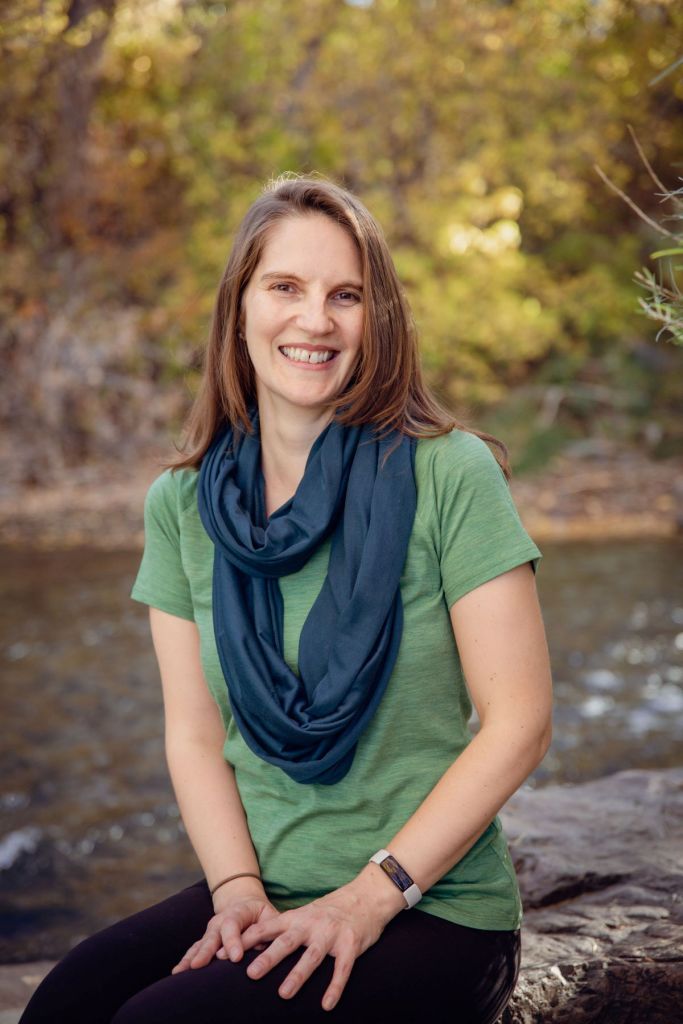I am a sucker for productivity audiobooks. I love listening to stories of how people have found the perfect system for creating better habits, finding better focus, or harnessing creativity.
Of course, I imagine myself in these stories. I envision days of productivity in the mornings, exercise in the afternoon, and fun in the evenings. Inspired, I pull out my trusty index cards and start mapping out the perfect schedule. I’ll get up at 6:30 am, then I’ll do 10 minutes of stretching for my perpetual neck pain, then I’ll read and get writing done and…
And then I wake up with a migraine. Or the seemingly permanent pinched nerve in my neck keeps me up late. My head is foggy. I’m exhausted. So instead of seizing the day, I stagger through it.
Once or twice, I have managed to achieve my perfect schedule for one or two days. But by day three, it inevitably runs me into the ground, and I spend a day in bed.
My perfect schedule is just a fantasy. And yet I cling to that fantasy. I keep trying again and again. But why?
The Allure of the Perfect Schedule
Do I think the perfect schedule will make my chronic illnesses less disabling?
Do I believe that “productivity” is the end-all, be-all of life?
Do I really think my body—the one living with pain and disability that is incredibly unpredictable—can fit into a schedule?
I’ve been pondering these questions a lot lately.
After 20 years of working full-time salaried jobs in the nonprofit sector, I’m now happily self-employed. For the first time in my adult life, I have the power to set my own schedule. I decide how many clients I take on and how many hours I work. I could even choose to fire a client and still be fine!
But even though I have intentionally created this freedom and flexibility, I still find myself trying to design the perfect schedule. I cannot let go of the idea that I could be doing more.
I suspect I am not alone. Those of us with chronic illness understand that, for every choice, there is always a price.
Our energy is finite. Our bodies rebel when we try to do too much.
I’ve long known that one of my biggest migraine triggers is finishing a deadline. It’s not the stress that triggers the migraine. It’s post-stress. I recently discovered this is called a “let down” headache.
But even too much fun can be a trigger. Last Saturday, I woke up with a migraine after spending an evening laughing with friends and their children. I wasn’t even up late. I didn’t drink alcohol or eat any trigger foods. But I’d smiled so much my face hurt. In the end, a migraine seemed a fair price to pay for that evening.
Routines vs Schedules
Some of the most common advice for those living with chronic migraines is to keep a steady sleep schedule. We are supposed to make and stick to a consistent daily routine. We must eat well, get gentle exercise, and minimize stress.
In other words, we must find the optimal way to structure our days and the optimal timing for our habits.
Yet, as I was hashing out my millionth version of the perfect schedule—one that would balance client work, personal writing, and rest and self-care—a friend suggested something that made me stop and rethink the whole endeavor.
She asked: “What if there is no perfect schedule?”
I knew the answer immediately. There is no perfect schedule, at least not for me.
My chronic illnesses are unpredictable. I can manage triggers, but I cannot control or confine my illnesses. I can only choose how I live with them.
Having a schedule implies control and rigidness. It suggests things must be done at a certain time and in a certain way.
In contrast, a routine implies a living practice. It suggests specific things to do but provides flexibility for when and how you do them.
Routines evolve. Routines adapt. Routines are not schedules.
Maybe, then, it’s time to put away the search for the perfect schedule. It’s time to stop “optimizing” my time and instead accept that each day will be different.
Some days will be great! And I can celebrate those. But I can’t reproduce them on command. That is the hardest part to accept. I don’t think I’m fully there yet not fully accepting of that reality. But at least I am aware of the real challenge ahead.

Camellia Phillips has loved writing since first grade, back in the days of graphite-stained fingers. Since then, her short fiction for children and adults has appeared in The Caterpillar, CALYX Journal, and cream city review, and her nonfiction has appeared in The Mighty, Spoonie Journal, The Chopping Blog, and La Dolce Vita Lifestyle Magazine. Her middle grade manuscript, Rat, Jack, and the Impossible Job, won Scribbler’s first-ever Manuscript Contest in 2022 and the Pacific Northwest Writers Association Literary Contest in 2021. She holds an MFA in creative writing from The New School. In 2019, she was selected as a 92Y Women inPower Fellow, a program for rising women leaders in New York City, but today she lives in a small village in Sicily with her author spouse. Camellia blogs about the reality of living and working with chronic illness—and having awesome adventures in the process—over at www.camelliawrites.com and www.ahouseinsicily.com.
